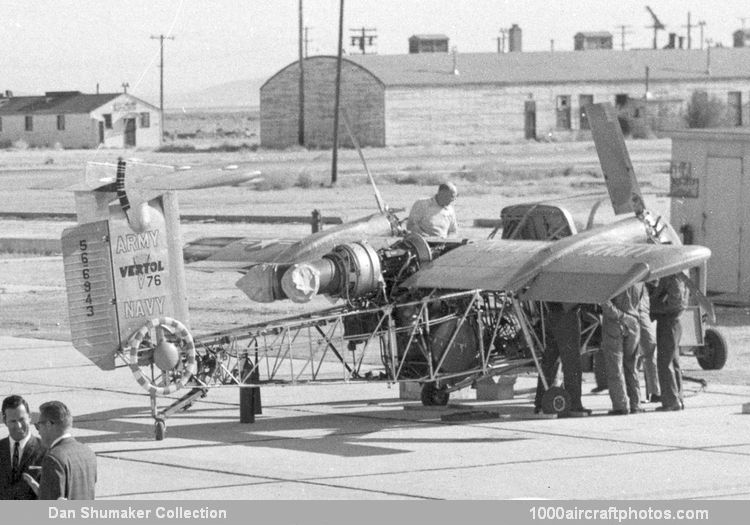07/31/2016. Remarks by Johan Visschedijk: "In the spring of 1956, Vertol received a joint US Navy-US Army contract to develop a tilt-wing research aircraft.
Vertol adopted a flying test bed approach in developing the VZ-2A, in order to explore the possibilities of the then-unproved tilt-wing concept with a relatively inexpensive aircraft, in considerably less time than would have been needed to design an entirely new aircraft. The aircraft was small of size, with a span of 24 ft 11 in (7.59 m) and a length of 26 ft 5 in (8.05 m). Installed in the fuselage, the 860 shp Lycoming YT53-L-1 shaft-turbine engine was geared to drive a pair of three-blade rotor/propellers of 9 ft 6 in (2.90 m) diameter that were mounted on the tilting wing. Two ducted fans were mounted horizontally and vertically at the tail to provide additional control and stability in vertical, hovering and low-speed flight. As the wing tilted downward during conversion from vertical to horizontal flight. the differential propeller collective-pitch system phased out as a means of providing lateral control and a conventional aileron system took over.
The ground test program began in April 1957, first flights were made on August 13, 1957 (vertical) and January 7, 1958 (horizontal), and on July 15, 1958 this culminated in the successful transition from vertical to horizontal flight and vice versa. The aircraft was continuously modified, the cabin was enlarged, the fuselage was (temporarily) covered, and both a dorsal fin and a (temporarily) ventral fin were added, while also a new type of yaw control system was fitted. In November 1960 NASA started engineering evaluation and flight testing of the VZ-2A. In May 1961, Boeing Vertol (Vertol was purchased by Boeing in 1960) received a further contract to improve stability and control. The wings were modified, while the transmission system was uprated from 630 hp to 700 hp. Thereafter NASA conducted a new flight evaluation program.
When the program ended in 1965, the VZ-2A had completed 448 flights, totaling over 50 hours. Twelve pilots had flown it successfully and 273 conversions had been made, including 34 full conversions. The VZ-2A was donated to the Smithsonian and stored at the Garber Facility."
